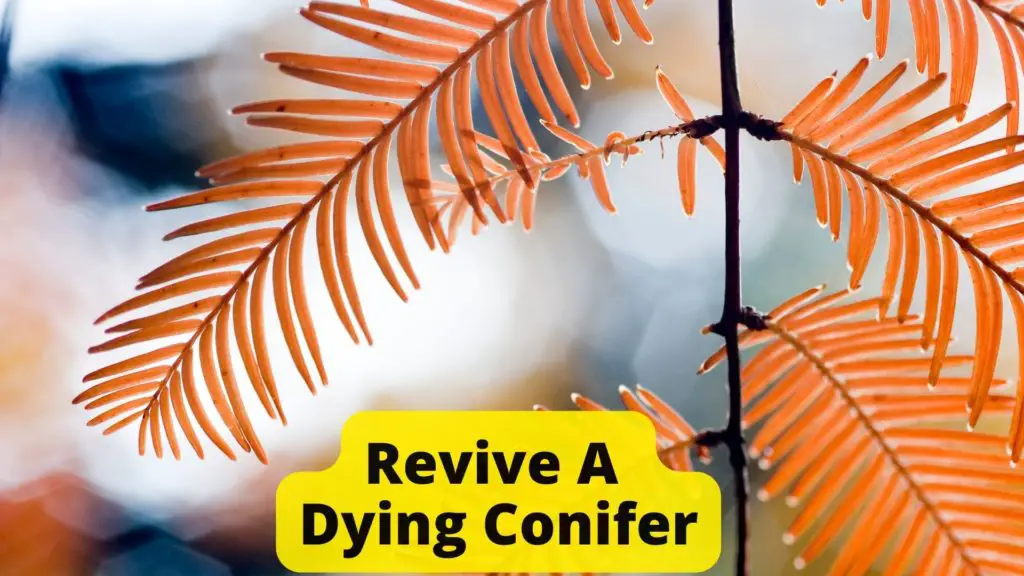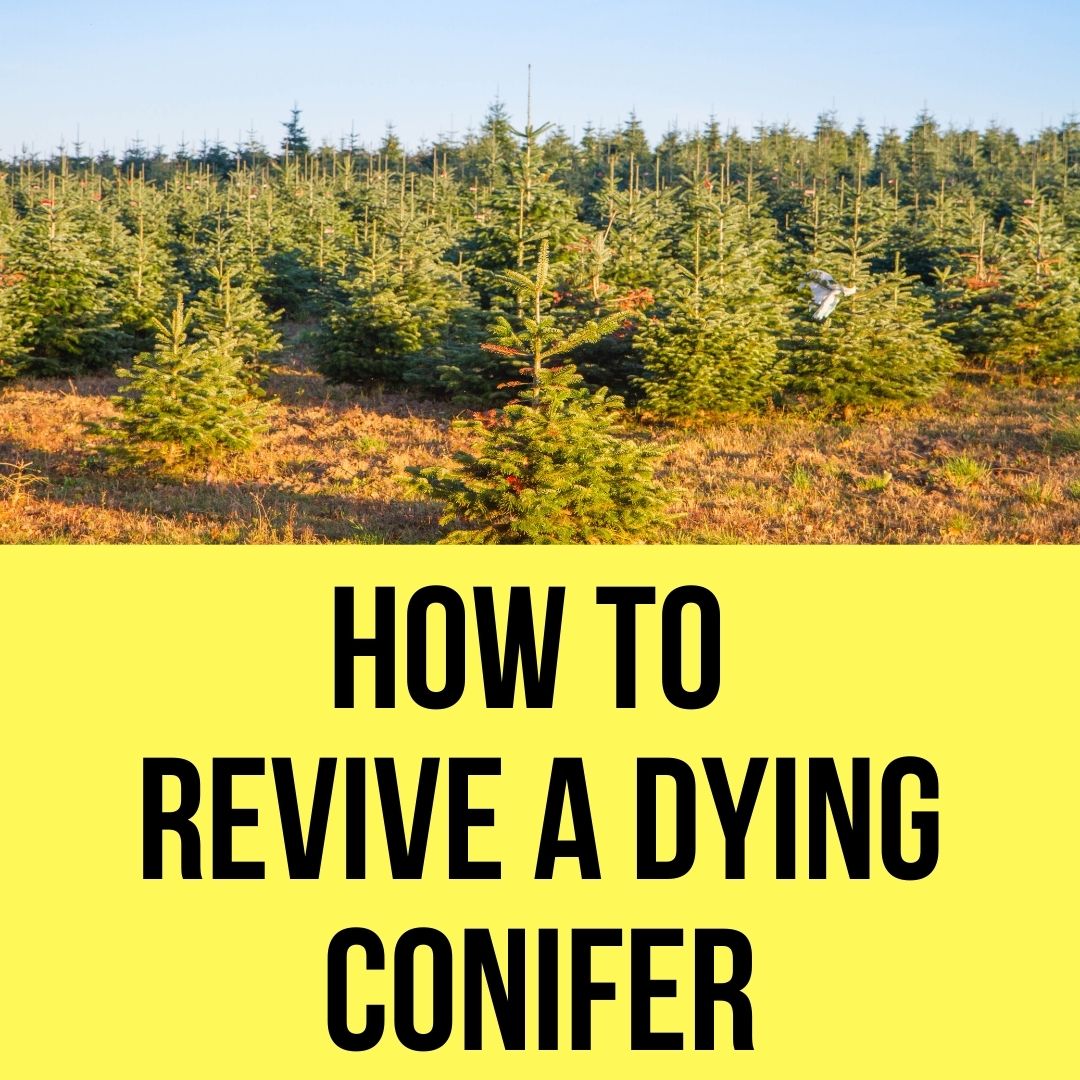The word ‘Conifer’ is an umbrella term for many plants with the same type of fruit. Conifer trees bear a fruit that is shaped like a cone and the name ‘Conifer’ is said to come from this. These species of tree are seen all over North America. The famous conifers in nature are Fir, Arborvitae, Pine, Cypress, Juniper, Spruce, Cedar, Juniper.
Let’s see what are the cause and solutions to revive a dying conifer tree.
Conifer
Conifer trees are typically planted in gardens because of their evergreen foliage. Although there are some exceptions such as the Bald Cypress and Larch. They lose their foliage in winter.
The foliage of conifers is one of their primary characteristics. It is needle-like, sharp. The foliage colors can vary for different types of conifers. Sometimes they are green-tinted with blue, gold, or gray.
How To Revive A Dying Conifer?
The conifers are trees that can protect things from harsh winter or icy winds. They are also planted around residences to block views and to create privacy.

The trees can serve many purposes and they are famous as garden trees in many places. They can also survive with little care. They are mostly pests and disease resistant, need to be watered only in the dry season.
The trees also do not need fertilizer if they are planted in good soil. Conifers naturally grow into beautiful trees and shrubs without trimming. So, they make the best garden trees.
Solution For Why Succulent Leaves Turning Black
Cause And Treatments
Though it is true Conifers can resist most pests and diseases, there are times when this strong tree also needs care. There are many types of diseases or natural reasons that can harm your conifer and cause it to slowly die out.
The diseases or natural reasons that could affect your conifer are Needle Cast, Needle Blight, Rust, Winter Injury, and Drought.
Needle Cast
Needle cast is fairly common for conifers. The disease is also known as Rhizosphaera needle cast. If a conifer is infected they show browning of the needles followed by abnormally high needle drop.
The tree also shows signs of dieback. The disease is seen in conifers all across North America. This might happen due to bad soil conditions or watering.
The disease can spread to the tree fast and cause all foliage to fall out. If it gets severe the tree might die. The first step to deal with it is to act fast and prune all the infected foliage and branches.
The removed foliage should be burned immediately. When you are done with the removal of infection apply a fungicide. The tree will also need deep watering once per week to recover from the stress of the disease.
Needle Blight
The needle blight can be sorted into three categories. They are Dothistroma, Brown spot, and Diplodia. The infection might start from the lower branches and slowly spread. The first sign is the browning of the needles and the needles fall rapidly.
If this is untreated the tree eventually loses the ornamental value and takes on a dead, barren look. The infection if not dealt with can create an annual infection cycle. That eventually can kill branches and slowly make the tree unable to recover.
Needle blight can be treated by copper fungicide spray. It needs to be applied on a regular basis to break the cycle of the fungi. It is a slow process but is the most effective one. If the disease is discovered in the initial phase, it becomes easier to treat.
Rust
It is a disease that can rot branches or twigs. It makes brown spores that spread all over the tree. The foliage is covered by rust-colored powder. It was named after this phenomenon and is caused by a group of fungi.
The trees show swells on branches and twigs. These swells look like cysts or tumors. They may occasionally discharge yellowish or waxy matter.
This can cause severe stress to the tree and can make it a host for other diseases. So it should be dealt with as early as possible. Firstly remove all the infected branches and foliage. Then burn them, do not mix them with compost.
The infected areas in tree barks and big branches should be chipped away. After that apply fungicide in those places. The regular treatment should return the tree to its former glory.
Drought
Drought can happen if the tree’s primary and feeder roots die. These can cause the tree to slowly die from lack of water. Droughts can usually happen in long winters and dry summers.
The soil may not be best for the conifer and environmental changes can cause drought for your conifer. The branches slowly wither, needles fall out, bark cracks, tree droops, yellowing, dieback, etc. are the symptoms of drought.
There is no remedy for the drought but caring for the tree might help it regain its strength. Firstly cut all the dead branches, twigs. the foliage then deep water the tree.
The deep watering should be done once a week and the water should reach 12 to 15 inches below. It needs to be done on the root level. Then do some light waterings for the branches and foliage.
Winter Damage
Conifer trees are quite a winter resistant but early winter or abnormally cold winters can damage the trees. The trees cannot survive in those types of situations and show major signs of stress.
There can be browning of needles, needle drops, bark splitting, off-coloring, and dieback. The tree can eventually die if no steps are taken.
The first step is to trim all the damaged branches and foliage. This helps the tree to retain some energy. Then deep water the tree because in very cold winters, the underground water levels drop.
So the tree cannot collect enough water. You can also do deep watering before winter to ensure the tree gets enough water to survive. If you think winter is particularly harsh for your conifer buy burlap rolls. They are cheap and you can cover your tree with them, to protect it from wind and snow.
Conclusion
Conifer trees are hardy trees in nature but they can also fall prone to diseases and natural phenomena. The trees can bounce back if they are taken care of and can return to their healthy phase. It is a tree that is famous for its ornamental value and diseases can take that away very quickly.
However do not be scared and follow necessary guidelines, get in touch with experts for help. The trees will survive through most problems with immediate actions. So, care for your tree and always keep them under observation.
